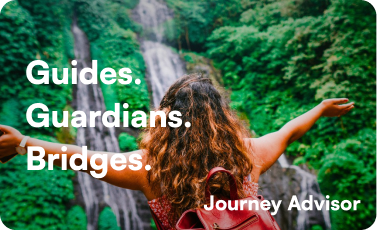Colca Canyon & Andean Culture




Colca Canyon is a vast gorge in Southern Peru, about 105 km northwest of Arequipa. Reaching a depth of around 3,270 meters (10,730 ft), it ranks among the deepest canyons in the world, along with the nearby Cotahuasi Canyon. To put that into perspective, Colca Canyon is almost twice as deep as the Grand Canyon.
On this Colca Canyon 2 day tour, you'll see the canyon which stretches for 70 km, that was formed over millennia as the Colca River slowly cut its way through the landscape. It’s a spectacular sight, flanked on one side by Chila Cordillera and on the other by Mount Hualca Hualca, Sabancaya, and the Ampato Volcano. In the distance, you can see the active stratovolcano Mount Ubinas and the beautiful Mount Coropuna.
The canyon and the whole Colca Valley area were home to three ethnic groups, the Collaguas, the Cabanas, and the Ccaccatapay, whose descendants still live here. Settlements here date back to pre-Inca times, with a scattering of towns from the period of Spanish colonization. The region is also home to diverse flora and fauna, most famously the Andean condors — the largest flying birds in the world — who swoop and soar on the thermals rising up along the canyon walls. They share the canyon with kestrels, peregrine falcons, Andean tinamous, and more, making Colca a paradise for birdwatchers and trekkers alike. Experience Andean culture on this Colca Canyon tour from Arequipa!


Our first day begins early in the morning as we leave the White City of Arequipa and set off along the route to the Colca Valley. It’s a beautiful drive, passing snow-capped volcanoes, rugged pampas, traditional terraced farms, and picturesque villages where the old traditional ways of life are still very much alive.
We’ll make a few stops along the way, the first at the Aguada Blanca National Reserve, where we can watch innumerable guanacos, alpacas, and vicuñas as they graze on the plains. The reserve, which covers almost 366,936 hectares, was created to preserve the local flora and fauna and their natural environment, which was previously deteriorating at an alarming rate. The reserve also protects the local vicuña population through its repopulation program.
Apart from the vast herds of camelids, the reserve is also home to the southern vizcacha (a large and loveable rodent), foxes, condors, and Andean flamingos (also known as parihuanas). In total, 169 animal species have been identified in the reserve, including 23 mammals and 138 species of birds, such as blue-billed ducks, eagles, and kestrels. During their migration period, flamingos also arrive to spend time wading through Salinas Lake.
Leaving the reserve, we’ll drive around the edge of the Chucura Volcano until we reach the Patapampa Andes viewpoint. We’ll now be at 4,900 meters above sea level, and from here we can look out across the beautiful landscape to the peaks of snow-capped mountains and volcanoes in the Arequipa Region, including Hualca Calca, Sabancaya, and Ampato volcanoes.
Our next stop will be the town of Chivay, where one end of the Colca Valley begins. The traditional terrace systems found here, built by indigenous inhabitants of the area, are remarkable for their scale and precise construction. Chivay itself was founded by the Spanish, a fact reflected in its church and other colonial buildings. You can have a traditional lunch in the town (not included) before we check in to our hotel.
You’ll then have the afternoon to explore the town on your own, and, if you like, visit the hot springs at La Calera, (not included) about 3 km from Chivay. Colca Canyon and the Colca Valley are dotted with natural hot springs and thermal baths, thanks to the seismic activity in the region.
t’s another early start today, because there’s so much great stuff to see! First, we’ll head to the lookout point known as Cruz del Cóndor ( Condor Cross), near the small villages of Maca and Cabanaconde. Here, strong winds rise up from the canyon, providing a favorite spot for Andean condors. They soar on the thermals, often in pairs, normally in the early morning and late afternoon. There’s a good chance you’ll see these huge condors, with their three-meter wingspans, flying very close to the lookout point, providing a truly majestic sight. From the lookout point you’ll also have incredible views down into the depths of Colca Canyon.
We’ll then head back to Chivay, first stopping off at the traditional village of Pinchollo and the Antahuilque viewpoint. This viewpoint (or mirador, as they are known in Spanish) offers wonderful views of the 1,500-year-old agricultural terraces that curve along the hillsides like an amphitheater. You can also spot some of the enchanting lagoons of the Colca Valley.
Next is the lookout point of Choquetico, where we can see two very interesting features. First are the hanging tombs, or tumbas colgantes, built by the Aymara-speaking Collaguas around 1200 AD. These funerary niches were cut into the cliffs of Cerro Cabanaconde and then sealed off with rock walls. In order to reach these otherwise inaccessible cliff faces, the builders likely worked their way down using ropes suspended from trees up above. The second interesting feature we can see here is the litomaqueta, a model of the canyon terraces carved into a rock.
Moving on, we’ll visit the small Andean village of Maca, which sits on the lower slopes of Sabancaya Volcano and Nevado Hualca Hualca. Then we’ll pay a visit to the village of Yanque, which is home to a pretty white church, a small archaeology museum, and thermal baths down by the river.
Around 13h00 we will begin our drive to Arequipa (or Puno) depending on your preference.
Would you like this tour as a private service?



We are more than a team: we are guardians of a living history,
AND YOU TOO!

When you travel with us, every
step supports people, culture,
and nature.
Your journey helps local communities thrive, protects traditions, and contributes to the conservation of Peru’s landscapes. Together, we create positive impact with every trip.



Certified by international standards and proud members of leading travel organizations, your journey is in safe hands.








